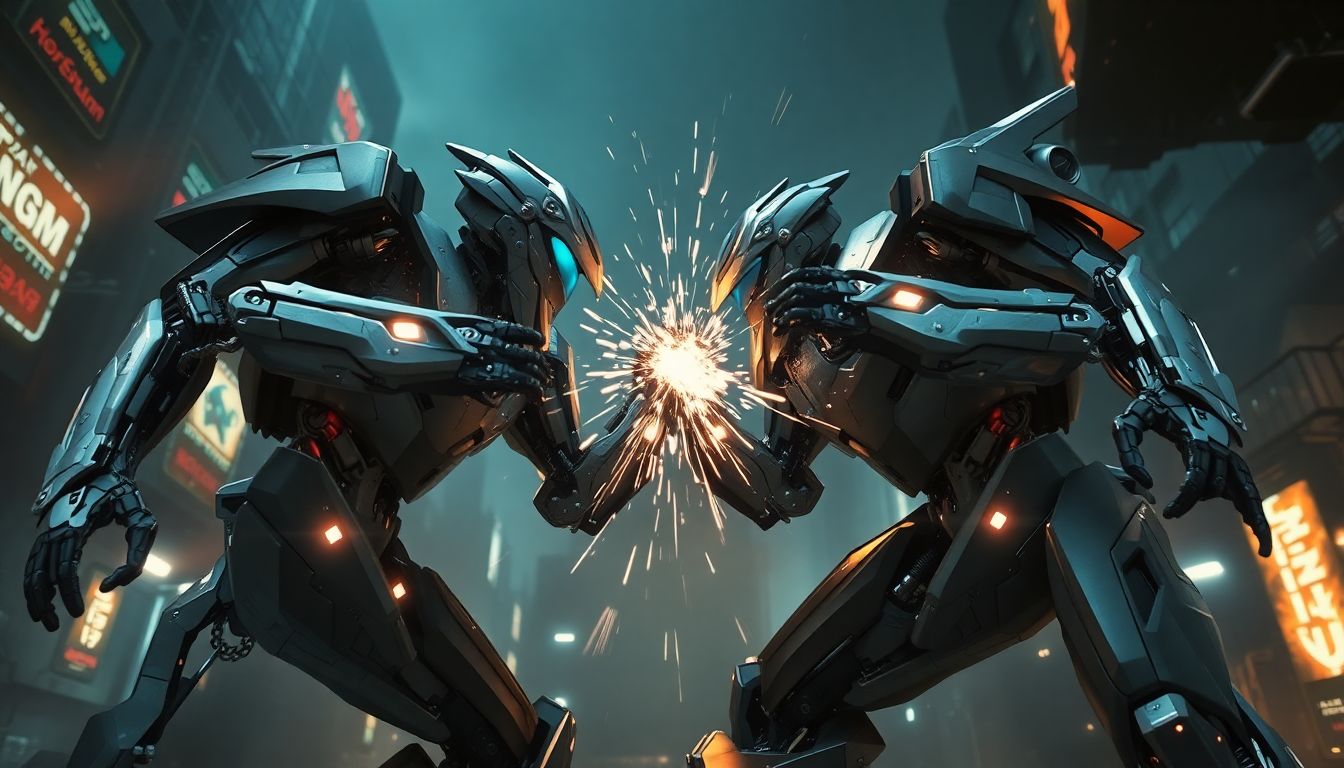A robot created only for war marches to the arena. It has unprecedented speed and accuracy for humans. The choice of every next step is calculated almost instantly, as it is not controlled by a human but by artificial intelligence. Does this sound like science fiction or a new reality? Well, it’s closer to reality than you might think because AI combat robots already exist. The development of combat robotics has come a long way from radio-controlled machines, and now they are managed by artificial intelligence. This means that combat robots’ technologies are no longer passive passengers but take on a more active role. This fact leads to both interesting prospects and serious questions, including ethical issues. This post discusses how AI changes the essence and understanding of combat robots and what it actually means.
Artificial Intelligence in Combat Robotics
Artificial intelligence uses artificial neural networks, machine learning techniques, and different algorithms to make combat robots more intelligent and faster. This technology helps robots navigate, identify their goals, and make decisions on their own. Artificial intelligence allows them to act autonomously, not requiring human control and direct commands in every situation.
Navigation and Mapping
Artificial intelligence helps robots move through complex terrains and spaces. For instance, a combat robot can get maps of specific locations via attached cameras and sensors and then make instant decisions about obstacles and determine the best way to proceed without receiving external commands. This maneuver is indispensable in both the military sphere and rescue missions.
Target Identification and Tracking
Artificially intelligent combat robots use algorithms to identify and monitor targets. They can differentiate between friend and foe. Moreover, they can predict where exactly the target will move based on the situation, more accurately and with fewer errors.
Decision-making
Artificial intelligence enables self-governing for robots. This means they can determine when to attack, defend, or pull back. These decisions are made faster than humans can manage. On the one hand, it’s convenient, but on the other, these systems raise many questions, such as who’s in charge and who’s accountable.
Elements and Technologies Behind AI Combat Robots
Modern AI combat robots are brilliant feats of engineering. They’re a fusion of high-tech hardware and clever software. Let’s see what drives these robots in their original formations.
Advanced Sensors and Actuators
Different sensors allow robots to see, feel, or sense their environment. They use LiDAR to create 3D maps and cameras to visualize the world. Actuators such as motors and pistons allow them to move and wield arms.
AI Algorithms and Machine Learning Models
These robots are powered by sophisticated AI algorithms. Neural networks enable them to learn through experience. They can learn from their mistakes and improve over time. Training on data is ongoing.
Power Systems and Energy-Aware Designs
Combat robots require robust power systems for endurance. Energy comes from batteries, generators, or even fuel cells. Energy-saving designs allow them to survive longer on the battlefield or in the arena.
Uses of AI Combat Robots
AI combat robots are not just for show. They have many applications across domains. Robots are making a splash from defense to entertainment.
Military and Defense
These robots are of great interest to the military. They can perform dangerous jobs, such as reconnaissance, border surveillance, and even combat. They could carry troops, save lives, and make military operations more effective.
Law Enforcement and Security
Robots can be used for patrol by police and security forces. They also handle bomb disposal and work in hazardous environments. Robots can go where people cannot, keeping humans safe.
Entertainment and Competitions
Robot combat tournaments, like BattleBots, are extremely popular. AI is beginning to play a more meaningful role in these events, making the fights more thrilling and showcasing what these robots can really do.
Issues and Ethical Implications
Despite all the excitement, there are issues. AI combat robots challenge the essential tenets of safety, ethics, and the rules of war.
Safety and Reliability
What happens if a robot makes a mistake? Can it cause harm? These are real concerns. We must ensure robots are safe to deploy. There need to be safeguards to prevent accidents.
Autonomous Weapons: An Ethical and Philosophical Approach
Is it okay for robots to kill without any human involvement? This is a big debate. People fear letting machines become too powerful. Many argue that humans should always retain ultimate control over lethal force.
Legal and Regulatory Frameworks
We need rules for AI combat robots. If a robot does something wrong, who is at fault? How do we control their use? Setting clear rules can help ensure that these robots are used safely and ethically.
What Lies Ahead for AI Combat Robots
So, what lies ahead for AI combat robots? The future is bright, but it is also uncertain. Let’s explore what’s coming.
Global Trends in AI and Robotics
AI is evolving smarter every day. Sensors are becoming more sensitive, and robots are being made more nimble and hardy. More powerful robots are on the horizon.
Human-Robot Collaboration
Perhaps the future doesn’t involve robots taking over humanity. Instead, it’s about collaboration between humans and robots. Humans could manage strategy, while robots handle risky tasks. That combination could be incredibly powerful.
Impact on Warfare
AI combat robots could alter the face of wars. They might usher in more rapid and accurate warfare. But they could also render war less personal, creating greater separation between decision-makers and the battlefield.
Conclusion
AI combat robots have arrived, and they’re transforming the world. There are potential benefits, but they also pose serious challenges. AI in combat robotics is an interesting aspect of the rise of AI, but it requires careful consideration. We need to address ethics, ensure safety, and establish laws. How we address these questions will determine the future of this technology and how it will shape society.
“`
